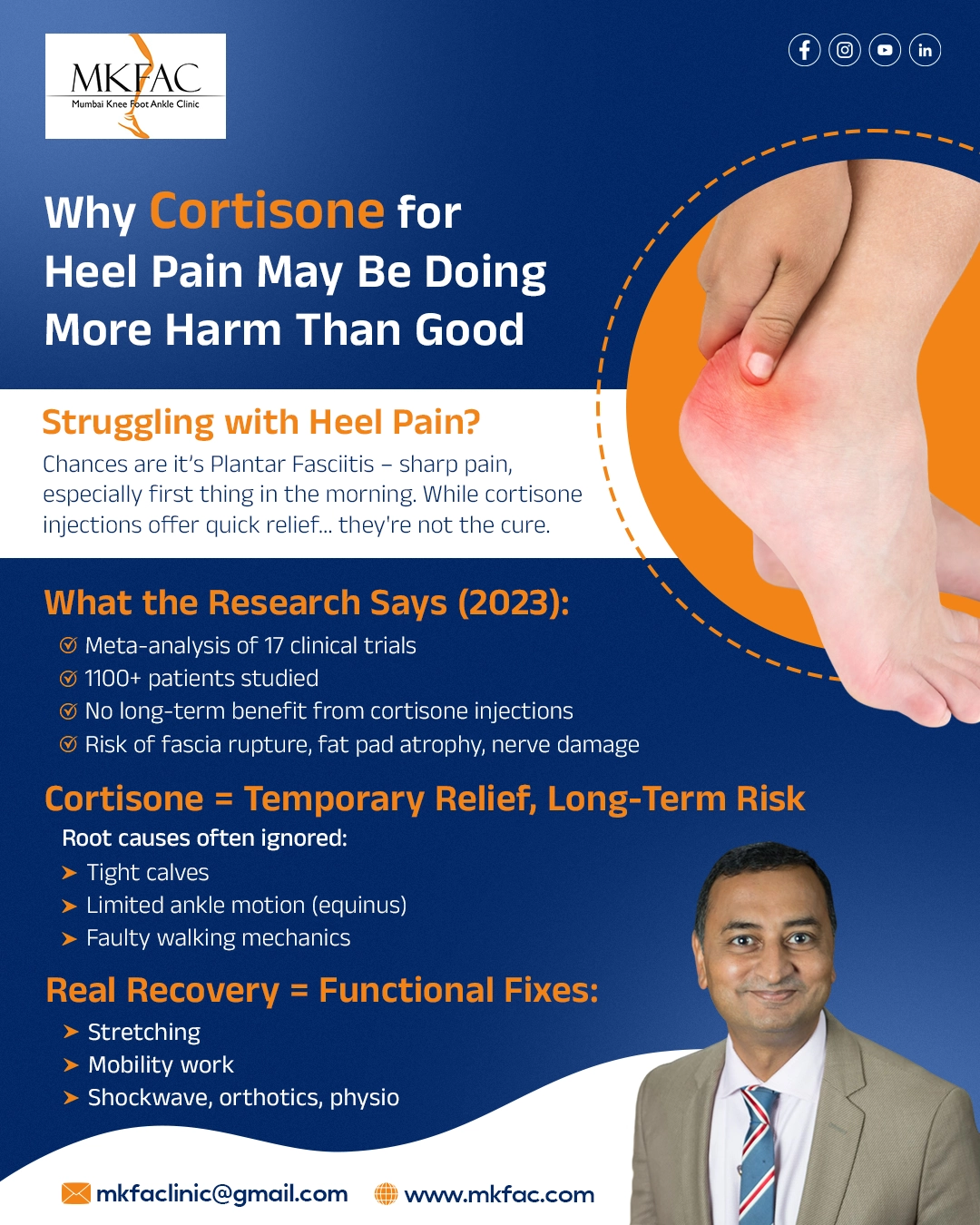Why Cortisone for Heel Pain May Be Doing More Harm Than Good
Heel pain is one of the most common complaints in clinics today. Plantar fasciitis is usually the cause. The pain strikes first thing in the morning. It affects walking, standing, and everyday movement. Physicians tend to recommend cortisone injections. However, recent studies indicate that this may not be the correct solution.
What the Latest Research Tells Us
A 2023 meta-analysis reviewed 17 randomised controlled trials. The study included over 1100 patients with plantar fasciitis. The findings were clear. Corticosteroid injections had no significant advantage over other treatment options. There was no improvement in pain scores. There was no reduction in the thickness of the plantar fascia. The short-term relief came at the cost of long-term progress.
Cortisone Gives Relief, Not a Cure
Many people still get cortisone as a first step. That is because it reduces pain quickly. But this relief is often temporary. The core problem is not solved. And that leads to repeated injections. Over time, this can do more harm than good.
Where the Problem Actually Begins
Plantar fasciitis often starts above the foot. Tightness in the calf and ankle is common. Limited dorsiflexion of the ankle joint is called equinus. This causes extra strain on the plantar fascia. Over time, it leads to inflammation and pain. But cortisone doesn’t address equinus. It doesn’t increase flexibility. It doesn’t restore proper motion. It only numbs the symptoms.
The Risks of Repeat Injections
When pain comes back, patients often get more injections. But this comes with risks. Fat pad atrophy. Tissue rupture. Nerve damage. Each injection increases the chances of complications. The fascia becomes weaker, not stronger. And still, the root cause remains untreated.
Pain Is a Signal, Not the Disease
Pain is not the main problem. It is a warning sign. Numbing it without correction is like turning off a smoke alarm while the fire keeps burning. Real healing begins when we stop chasing pain and start correcting what causes it.
Focus on Mechanics, Not Just Medicine
The key to long-term relief is fixing how the body moves. Equinus must be addressed. That means stretching the calf. Improving ankle motion. Correcting walking mechanics. Tools like night splints and physical therapy help. So does shockwave therapy. These options focus on function and healing, not just comfort.
The Fascia Is Responding, Not Failing
The plantar fascia is not the enemy. It is reacting to an excess load. Treating the fascia without easing that load is not effective. The tension must be reduced at the source. That means treating the tight calf and improving the ankle’s range.
Conclusion
Cortisone may provide relief, but it is not a long-term solution. It fails to fix the cause and may increase the risk of damage over time. The data makes that clear. Treatment should begin with function, not with a needle. Start with biomechanics. Restore motion. Reduce tension. That is how heel pain truly heals.
Consult Dr. Pradeep Moonot, Foot & Ankle Specialist, for a personalised treatment plan tailored to your needs. With expert guidance, you can get lasting relief and walk pain-free again.
